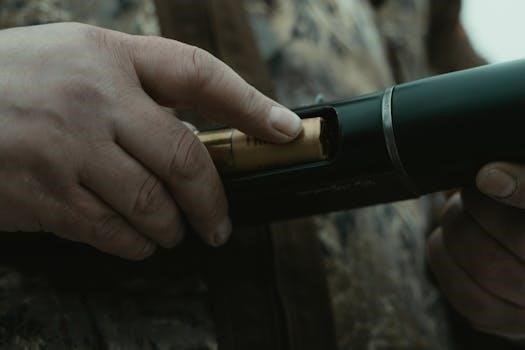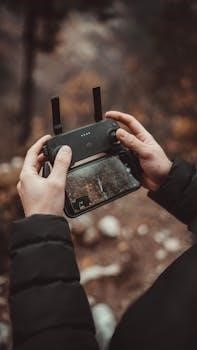hunter ceiling fan remote manual

hunter ceiling fan remote manual
Hunter Ceiling Fan Remote Manual⁚ A Comprehensive Guide
Welcome! This guide provides comprehensive information regarding your Hunter ceiling fan remote. From identifying your model to troubleshooting‚ we’ll cover essential aspects.
Ensure safe operation by understanding its features and following safety precautions.
Let’s dive into mastering your fan’s remote control!
Understanding Your Hunter Ceiling Fan Remote
Your Hunter ceiling fan remote is designed for convenient control of your fan’s functions. It allows you to adjust the fan speed‚ control the light‚ and sometimes even set timers.
Understanding the basics of how your remote communicates with your fan is crucial for effective use.
Most Hunter remotes use radio frequency (RF) signals to communicate with a receiver unit located inside the fan’s housing.
This allows you to control the fan from a distance without needing a direct line of sight.
Familiarizing yourself with the remote’s layout‚ including the placement of buttons for power‚ speed‚ and light‚ will greatly enhance your user experience.
Some remotes also feature advanced options like dimming control for the light and a reverse function to change the fan’s direction‚ optimizing airflow for summer and winter.
The remote provides effortless operation‚ allowing adjustments from anywhere in the room.
By understanding these fundamental aspects‚ you’re well-equipped to manage your fan’s operation.
Knowing your remote’s capabilities will lead to seamless integration with your Hunter ceiling fan.
Identifying Your Remote Model
Properly identifying your Hunter ceiling fan remote model is crucial for accessing the correct manual and troubleshooting information.
The model number is typically located on the back of the remote‚ often inside the battery compartment.
Look for a sticker or a molded inscription with a series of numbers and letters.
Common formats include alphanumeric codes like “K5579-01” or “27208‚” and others.
Sometimes‚ the fan’s model number can help you determine the remote model if they were sold together as a set.
Once you locate the model number‚ you can use it to search for the specific manual on the Hunter Fan website or other online resources.
The manual will provide detailed information about the remote’s features‚ functions‚ and troubleshooting steps.
Keep in mind that using the incorrect manual can lead to confusion and potential damage to your fan or remote.
If you’re unable to find the model number on the remote itself‚ check your original fan packaging or any documentation that came with the fan.
Identifying your remote accurately ensures you have the right resources for optimal performance and longevity.

Downloading the Correct Manual
Once you’ve identified your Hunter ceiling fan remote model‚ downloading the correct manual is the next crucial step.
Begin by visiting the official Hunter Fan website.
Navigate to the “Support” or “Resources” section‚ where you’ll typically find a manual search tool.
Enter your remote model number into the search bar and initiate the search.
The website should then display a list of relevant manuals.
Ensure that the manual matches your specific remote model number to avoid any discrepancies.
Download the manual in PDF format for easy access and storage.
If you can’t find the manual on the Hunter Fan website‚ try searching online using search engines like Google or Bing.
Include the remote model number and the term “manual” in your search query.
Be cautious when downloading from third-party websites‚ ensuring they are reputable and trustworthy.
Alternatively‚ check online retailers like Home Depot or Lowe’s‚ as they sometimes provide manuals for products they sell.
Having the correct manual at your fingertips enables you to understand your remote’s functionalities.
It also provides troubleshooting tips and safety precautions‚ ensuring the optimal and safe use of your Hunter ceiling fan remote.
Basic Remote Functions⁚ Power‚ Speed‚ and Light
The basic functions of your Hunter ceiling fan remote typically include power‚ speed control‚ and light operation.
The power button‚ often marked with a universal power symbol‚ turns the fan on or off.
Fan speed control usually consists of multiple buttons‚ each representing a different speed level‚ such as low‚ medium‚ and high.
Pressing a speed button adjusts the fan’s rotation speed accordingly.
Some remotes may feature an auto speed function that automatically adjusts the fan speed based on the room’s temperature.
The light button controls the ceiling fan’s light fixture.
Pressing the light button turns the light on or off.
Some remotes offer dimming functionality‚ allowing you to adjust the light’s brightness level.
The light button may also have a hold-to-dim feature.
This feature allows you to brighten or dim the light by holding the button down.
Understanding these basic functions is essential for everyday use of your Hunter ceiling fan remote.
Familiarize yourself with the location of each button and its corresponding function for convenient operation.
These functions provide quick and easy control over your fan and lighting.
This will help you to create a comfortable and well-lit environment in your home.
Consult your remote’s manual for specific details.
Advanced Features⁚ Dimming‚ Reverse‚ and Timer
Many Hunter ceiling fan remotes come equipped with advanced features that enhance functionality and convenience.
One such feature is dimming control‚ which allows you to adjust the brightness of the ceiling fan’s light fixture.
This feature creates the perfect ambiance for any occasion.
The reverse function changes the direction of the fan’s rotation.

In the summer‚ the fan should rotate counterclockwise to create a downdraft‚ providing a cooling breeze.

In the winter‚ the fan should rotate clockwise at a low speed to circulate warm air trapped near the ceiling.
Some remotes have a timer function that allows you to set the fan and/or light to automatically turn off after a specified period.
This feature is useful for saving energy or for use as a nightlight.
The timer can typically be set for various durations‚ such as 1 hour‚ 2 hours‚ or 4 hours.
To use these advanced features‚ refer to your remote’s manual for specific instructions.
The dimming function may require holding down the light button or pressing a dedicated dimming button.
The reverse function may be activated by pressing a reverse button or by toggling a switch on the remote.
The timer function may involve pressing a timer button and selecting the desired duration.
Understanding and utilizing these advanced features can significantly improve your comfort and convenience.
Take full advantage of your Hunter ceiling fan remote’s capabilities.
Pairing or Syncing Your Remote to the Fan
Sometimes‚ your Hunter ceiling fan remote may lose its connection with the fan‚ or you might need to pair a new remote.
Pairing‚ also known as syncing‚ is the process of establishing a connection between the remote and the receiver in the fan.
This process ensures that the remote can control the fan’s functions.
The pairing procedure varies depending on the model of your Hunter ceiling fan and remote.
Typically‚ the process involves cutting off power to the fan‚ then restoring it.
Within a specific timeframe‚ you must press a button on the remote‚ often the fan button or a dedicated “sync” button.
This action sends a signal to the receiver‚ establishing the connection.
Some models may require holding down the button for several seconds.
Refer to your owner’s manual for the exact steps for your specific model.
The manual will provide detailed instructions and diagrams to guide you through the process.
If you do not have the manual‚ you can often find it on the Hunter Fan website by searching for your fan model.
Ensure the remote is within close range of the fan during the pairing process.
Obstructions or excessive distance can interfere with the signal.
If the pairing is unsuccessful‚ repeat the process‚ making sure to follow the instructions carefully.
Sometimes‚ replacing the remote battery can resolve pairing issues.
If you continue to experience problems‚ consult the troubleshooting section of your manual or contact Hunter Fan customer support for assistance.
Troubleshooting Common Remote Issues
Encountering issues with your Hunter ceiling fan remote can be frustrating‚ but many problems have simple solutions.
One common issue is the remote not responding at all.
First‚ check the battery. Ensure it’s properly installed and has sufficient charge.
A weak battery is a frequent culprit.
If the remote still doesn’t work after a battery replacement‚ try pairing or syncing the remote to the fan again.
Instructions for pairing can be found in your owner’s manual or on the Hunter Fan website.
Another common problem is intermittent functionality.
The fan may respond sometimes but not others.
This could indicate a loose connection or interference.
Ensure the receiver unit in the fan is securely connected.
Also‚ check for potential sources of interference‚ such as other electronic devices operating on similar frequencies.
If the fan speed or light dimming isn’t working correctly‚ it could be a setting issue.
Make sure you haven’t accidentally activated a timer or other advanced feature that’s affecting the fan’s operation;
Refer to your manual to understand the functions of each button.
If the light flickers or doesn’t turn on‚ check the light bulb.
Ensure it’s the correct type and wattage for your fan.
If the issue persists‚ there might be a problem with the light kit itself.
If none of these steps resolve the problem‚ consult the troubleshooting section of your owner’s manual or contact Hunter Fan customer support for further assistance.
They can provide specific guidance based on your fan model.
Replacing the Remote Battery
Replacing the battery in your Hunter ceiling fan remote is a straightforward process that can often resolve functionality issues.
First‚ identify the battery type your remote requires.
This information is usually found in the remote’s battery compartment or in the owner’s manual.
Common battery types include AAA or AA alkaline batteries.
To access the battery compartment‚ locate the battery cover on the back of the remote.
It may slide off or require a small screwdriver to open‚ depending on the model.
Once the cover is removed‚ carefully take out the old battery.
Note the polarity (+ and -) of the battery before removing it‚ as you’ll need to insert the new battery in the same orientation.
Insert the new battery‚ ensuring the positive and negative ends align correctly with the markings in the compartment.
Incorrectly inserting the battery can damage the remote.
Once the new battery is in place‚ replace the battery cover‚ making sure it’s securely closed.
Test the remote by pressing a button‚ such as the fan speed or light button.
If the remote doesn’t respond‚ double-check the battery polarity and ensure the battery is fresh.
If the remote still doesn’t work‚ consult the troubleshooting section of your manual.
It’s recommended to use high-quality alkaline batteries for longer life and optimal performance.
Dispose of the old battery properly according to local regulations.
Do not dispose of batteries in fire‚ as they may explode.
By following these steps‚ you can easily replace your Hunter ceiling fan remote battery and restore its functionality.
Finding Replacement Remotes
If your Hunter ceiling fan remote is lost‚ damaged‚ or malfunctioning beyond repair‚ finding a replacement is essential.
Several avenues are available to acquire a new remote‚ ensuring you can continue controlling your fan’s features conveniently.
Firstly‚ check the Hunter Fan website or contact their customer service.
They often carry replacement remotes specifically designed for their fan models.
Having your fan’s model number readily available will help ensure you receive the correct replacement.
Another option is to explore online retailers like Amazon‚ Home Depot‚ or Lowe’s.
These retailers typically offer a wide selection of universal and brand-specific ceiling fan remotes.
When searching online‚ carefully review the product descriptions and compatibility information to confirm the remote works with your Hunter fan.
Consider remotes that explicitly state compatibility with Hunter models.
Local hardware stores or lighting specialty shops may also stock replacement ceiling fan remotes.
Visiting these stores allows you to physically inspect the remotes and seek advice from knowledgeable staff;
When purchasing a replacement remote‚ ensure it includes all the necessary functions you require‚ such as fan speed control‚ light dimming‚ and reverse.
Some universal remotes may require programming to work with your specific fan model.
Refer to the remote’s manual for programming instructions.
If your original remote had advanced features like timers or breeze modes‚ look for a replacement that offers similar functionality.
Always prioritize purchasing from reputable sellers to ensure you receive a genuine and reliable product.
By exploring these options‚ you can successfully find a replacement remote for your Hunter ceiling fan and restore full control over its operation.
Safety Precautions and Warnings
Prioritizing safety is crucial when operating and maintaining your Hunter ceiling fan remote.
Always disconnect power to the ceiling fan at the main electrical panel before performing any maintenance‚ including replacing the remote battery or pairing the remote.
This prevents electrical shock and ensures safe handling of electrical components.
Never expose the remote to water or excessive moisture‚ as this can damage the internal circuitry and create a safety hazard.
If the remote gets wet‚ dry it thoroughly before attempting to use it.
Keep the remote away from flammable materials and heat sources to prevent fire hazards.
Do not attempt to disassemble or repair the remote yourself‚ as this can void the warranty and potentially lead to injury.
If the remote malfunctions‚ consult the troubleshooting section of this manual or contact Hunter customer support for assistance.
When replacing the remote battery‚ use the correct type and voltage as specified in the manual.
Improper battery usage can cause damage to the remote or create a fire hazard.
Dispose of used batteries properly according to local regulations.
Ensure the remote is stored in a safe place‚ out of reach of children and pets.
Small parts‚ such as batteries‚ can be a choking hazard.
Do not use the remote to control any other devices besides the intended ceiling fan.
Using the remote for other purposes can cause damage to the remote or the connected device.
Regularly inspect the remote for any signs of damage‚ such as cracks‚ loose buttons‚ or frayed wires.
If you notice any damage‚ discontinue use and replace the remote.
Following these safety precautions and warnings will help ensure safe and reliable operation of your Hunter ceiling fan remote.
